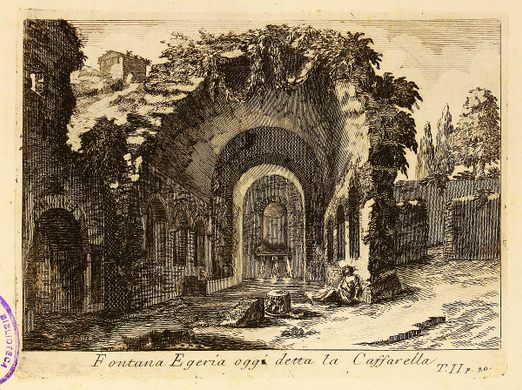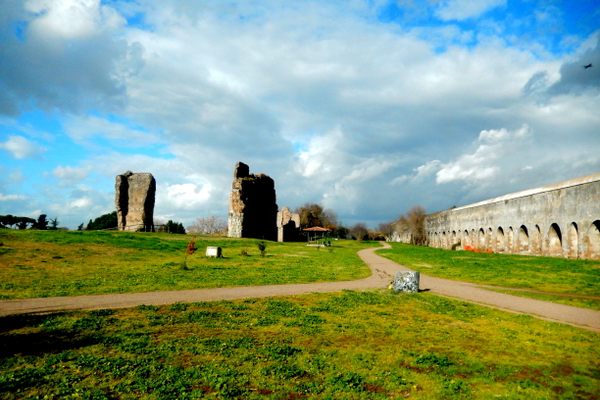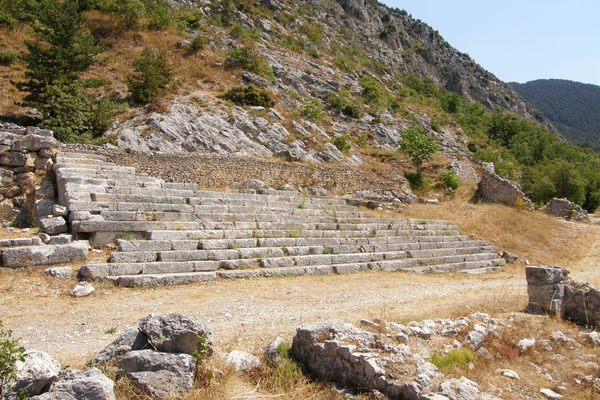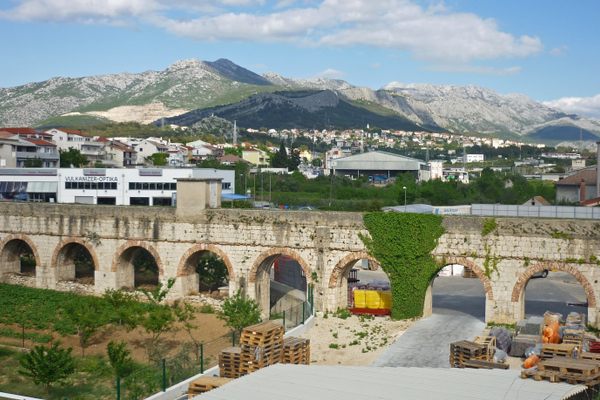Nymphaeum of Egeria
Roman politician Herodes Atticus built this nymphaeum to honor his wife, whom he may have murdered.
The ruin of a 2nd-century nymphaeum is among the most visible sights of Herodes Atticus’ Triopium, a vast estate near the Appia Antica in Rome. Herodes Atticus inherited the vast holding from his wife, the powerful and renowned Annia Regilla.
Herodes Atticus, also a famous sophist at the time, had been invited to Rome to tutor the two adopted sons of Antoninus Pius, the future emperors Marcus Aurelius and Lucius Verus. In Rome, he married the 14-year old Regilla, who was related to Antoninus Pius’s wife, Faustina the Elder, and pursued a successful political career between Rome and Greece. In Greece, Regilla was appointed to the prestigious position of priestess of Demeter in Olympia. The couple left a legacy of public monuments, such as the nymphaeum and aqueduct in Olympia.
However, Atticus’s reputation was tarnished when one of his freedmen fatally wounded a pregnant Regilla and charges were brought against Atticus. He had never hidden his love for the son of one of his freedmen but, perhaps through the intercession of Emperor Marcus Aurelius, his complicity in his wife’s murder was never proven.
A seemingly grief-stricken Atticus never married again and built a number of monuments in honor of his wife. These included the nymphaeum which still stands in Caffarella park.
The nymphaeum was constructed to glorify the Almone river, which runs from the Alban Hills, to the Tiber and through the Caffarella valley (named after the 16th century Caffarelli family). A statue of a reclining Almone river was placed at its center with special water effects, resembling a natural grotto for relaxation and banqueting.
The site is also believed to be related to the myth of the Camenae nymphs. One was said to have been the lover of Rome’s second king, Numa Pompilius, and who taught the king about all of the religious institutions and festivals of early Rome.
Upon the king’s death, legend says that the nymph turned into a spring believed to be the site of the nymphaeum. Although there have been suggestions that this is not the actual location.
The nymphaeum was constructed in the opus mixtum technique, and it was originally decorated with different types of precious marble, along with mosaics in the niches.
Know Before You Go
The nymphaeum can be visited along one of the trails in the Caffarella Park. There are maps inside the park and information can be found at the visitor's center on the Appia Antica or at the info center at the entrance of the park near Colli Albani metro stop.
















Follow us on Twitter to get the latest on the world's hidden wonders.
Like us on Facebook to get the latest on the world's hidden wonders.
Follow us on Twitter Like us on Facebook